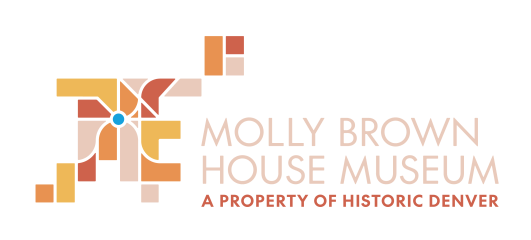AMAZING WOMEN OF WORLD WAR I
Today, June 2nd, the Museum opened a new exhibit titled “A Call to Arms”. It takes a look at efforts of American women, including Margaret Brown, during World War I both here in the United States and overseas. Once the United States entered the war in 1917, many more women headed overseas to help with the war effort. These women worked as nurses, bandage rollers, ambulance drivers, and even as fundraisers for soldiers.
While many women are featured in the education space of the exhibit, below are four extraordinary women who gave of their time to assist in the war effort.
Dorothy Canfield F isher
isher
During World War I: She went to France with her husband in 1916 and while she was raising two young children, she worked to establish a Braille press for blinded veterans. She also started a convalescent home for refugee French children from the invaded areas. She earned citations of appreciation from Eleanor Roosevelt, Madame Chiang Kai-shek, and the government of Denmark. After the war, she was the head of the U.S. committee that led to the pardoning of conscientious objectors in 1921.
Dr. Anna Howard Shaw
During World War I: While active in the Women’s Suffrage movement in the United States, during the war, she focused her attention on foreign affairs. She became the chair of the Woman’s Committee of the United States Council of National Defense. Through this position, she coordinated women’s contributions to the war effort. For her work as chair of the Committee, she was awarded the Distinguished Service Medal. She would be the first woman to receive this honor. At the end of the war, she lectured throughout the United States and Europe in support of world peace and the League of Nations. This was requested by President Woodrow Wilson and former President William Howard Taft. During one of her speaking tours, she fell ill and died in July of 1919.
Edith Wharton (Edith Newbold Jones)
During World War I: She was one of the few foreigners in France allowed to travel to the front lines during the War. She was helped by he r connections in the French government, mainly from Walter Berry, President of the American Chamber of Commerce in Paris. She described those trips in a series of articles Fighting France: From Dunkerque to Belfort. She would work with many charities to help refugees and in 1916 was named Chevalier of the Legion of Honour for her commitment to the displaced. Her relief work would include setting up workrooms for unemployed Frenchwomen, organizing concerts to provide work for musicians, opening tuberculosis hospitals, and founding the American Hostels for Belgian refugees. She edited a book in 1916 titled The Book of the Homeless, which was composed of writings, art, erotica, and musical scores by many of the contemporary
r connections in the French government, mainly from Walter Berry, President of the American Chamber of Commerce in Paris. She described those trips in a series of articles Fighting France: From Dunkerque to Belfort. She would work with many charities to help refugees and in 1916 was named Chevalier of the Legion of Honour for her commitment to the displaced. Her relief work would include setting up workrooms for unemployed Frenchwomen, organizing concerts to provide work for musicians, opening tuberculosis hospitals, and founding the American Hostels for Belgian refugees. She edited a book in 1916 titled The Book of the Homeless, which was composed of writings, art, erotica, and musical scores by many of the contemporary
European artists.
 Florence Jaffray “Daisy” Harriman
Florence Jaffray “Daisy” Harriman
During World War I: During the period of American neutrality, she was the co-founder of the Committee of Mercy which helped women and children of European noncombatants made destitute. In May 1916, she was recruited by Eleanor Roosevelt to lead a contingent of “Independent Patriotic Women of America”. After the United States entered the war, she organized the American Red Cross Women’s Motor Corps of the District of Columbia and directed the Women’s Motor Corps in France. She served as chair of the U.S. National Defense Advisory Commission’s Committee on Women in Industry.
Join us for “A Call to Arms” open from June 2nd-September 26th. We are also part of the Blue Star Museums (https://bluestarfam.org/Programs/Blue_Star_Museums) which offers free admission to all active duty, National Guard, and Reserve military and their families from Memorial Day to Labor Day.
